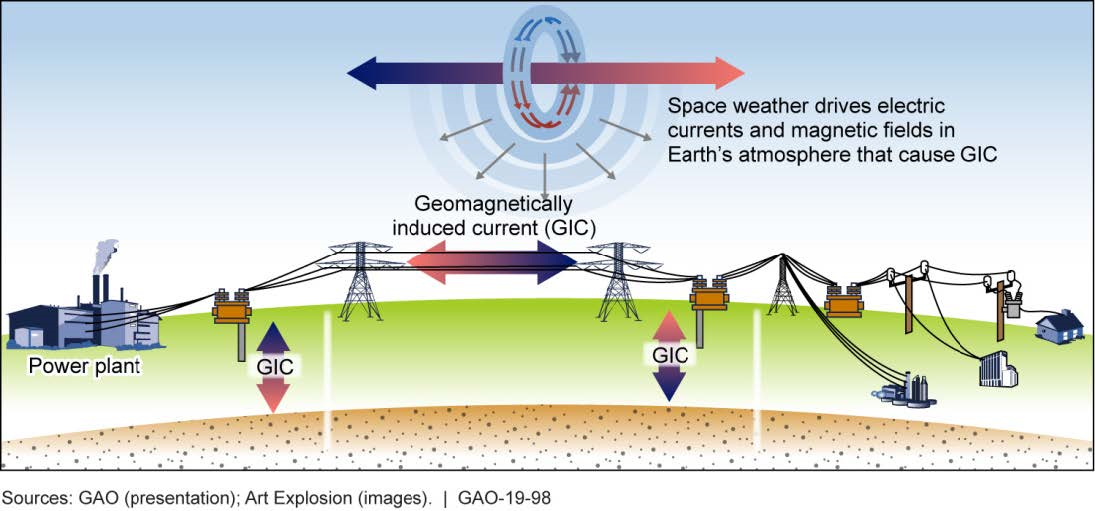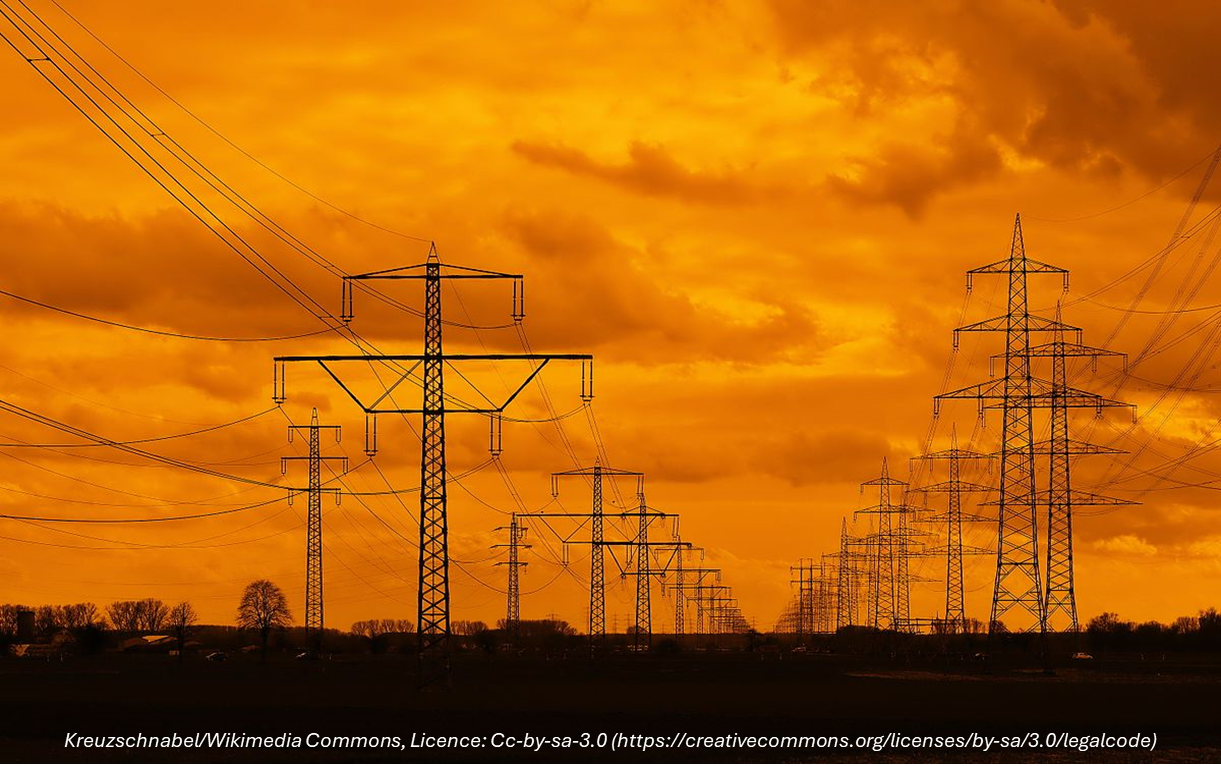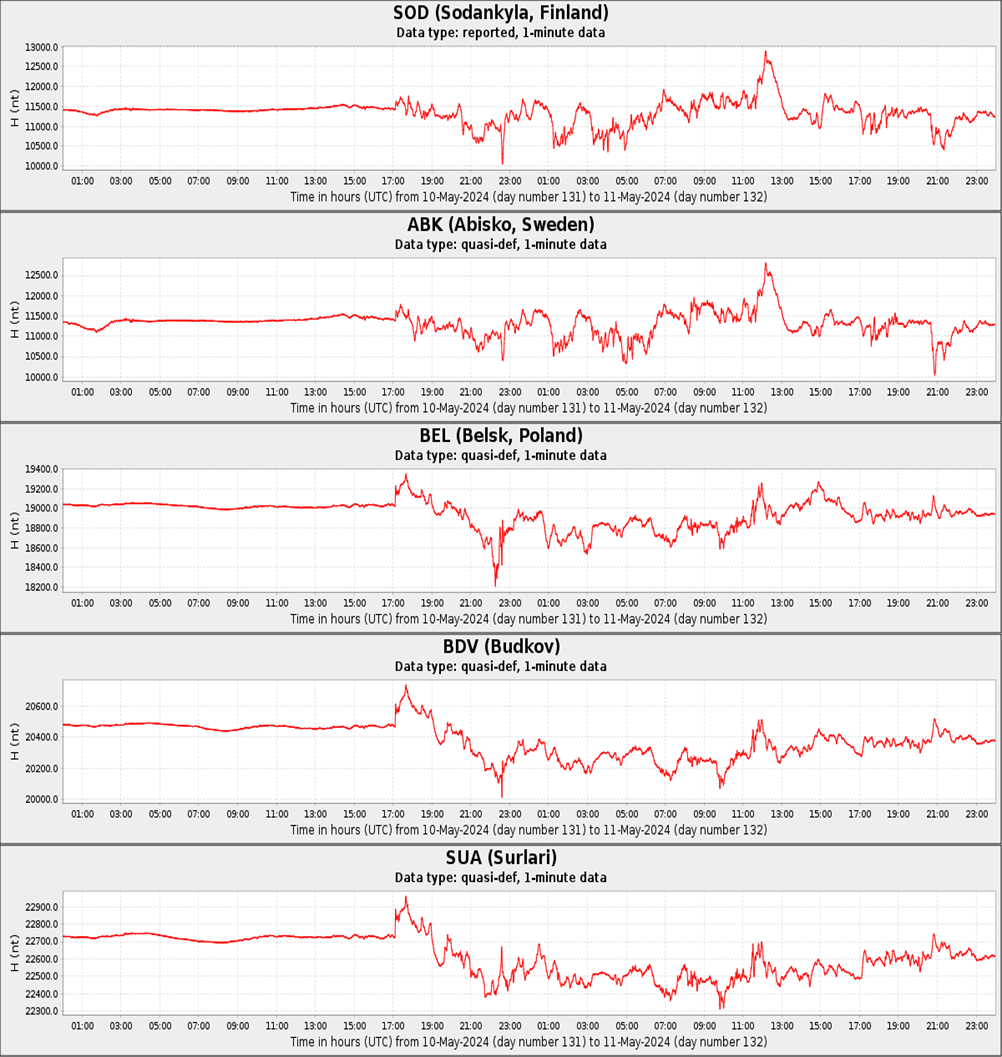The 20th European Space Weather Week (ESWW) took place in Coimbra, Portugal from 4 to 8 November. A very well-attended session was the "Severe Space Weather Events and Impacts of May 2024", distributed over 3 (half) days. One of the recurring themes was the impact on the power grids, caused by the geomagnetically induced currents (GICs). These electrical currents are flowing in the Earth's subsurface and can enter the grid structure through the grounding devices. GICs are the result of an electrical field generated by rapid variations of the geomagnetic field following the impact of a space weather disturbance, usually a strong coronal mass ejection (CME). The intensity of GICs is expressed in Ampères ("A") and depends not only on the intensity of the magnetic disturbances and the latitude of the station, but also on the ground conductivity i.e. how well the current can flow through the ground (rock, clay,...), and the configuration of the technological systems where such currents are induced. Another important factor controlling GICs is the existence of the sharp electrical conductivity boundary between land and ocean, i.e. the coastal areas. The strength of the electric field is expressed in volts per kilometer (V/km), with -depending on the location- typical values ranging from a fraction of a V/km during quiet space weather, to more than 10 V/km during a severe geomagnetic storm. The electric field itself changes on a time scale similar to the driving geomagnetic variation. The latter is called the rate-of-change of the Earth's magnetic field ("dB/dt") and is usually expressed in nT/min, though nT/s can be used during extremely severe storms when dB/dt can reach 10-20 nT/s. (Royal Academy of engineering - 2013 ; Despirak et al. 2024). The sketch underneath is courtesy of the US Government Accountability Office (GAO).


Most researchers were quick in emphasizing that the 10-11 May 2024 storm, despite reaching extreme storm levels, was certainly not as strong as e.g. the March 1989 or the October 2003 storms. The power grids certainly "felt" the impact of the geomagnetic storm, but it did not cause any damage.
- In the United Kingdom, the rate-of-change remained below 400 nT/min, with GICs up to 50 A. No problems were reported by the grid operators, although this was the 3rd largest storm after the storms in 1989 and 2003.
- In New Zealand, a grid emergency was declared on 10 May and some power lines were taken out as part of a mitigation plan. It is thought that without those measures, GICs would have been twice as high as the observed 100 A. Transformer tripping was observed on the southern island of New-Zealand.
- Some power grids in East and Central Europe reported problems on 10 May around 22:30UTC, which corresponded to a large spike in the magnetic field variation.
- Severe disturbances were also seen on the lines connecting Sweden with Denmark at the beginning of the storm, as well as with Poland around 22:30UTC on 10 May -the same time as in Central Europe- when there was a sudden loss of 600 MW, i.e. half a nuclear power plant. Some coordination meetings were held with the organizers of the Eurosongfestival that took place in Malmö (Sweden) on 7, 9 and 11 May 2024. That's indeed the same Malmö that experienced a power black-out during the Halloween storms in October 2003. With the Eurosong semi-finals taking place before the storm, and the final late on 11 May well after the most intense phase of the geomagnetic storm, no mitigation actions were taken. It was also noted that the disturbances were more present in central Sweden and at the coastal regions.
- In Alberta (Canada), GICs up to 170 A and an electric field of 1.1 V/km were recorded. Some tripping was reported, but there was no loss in service provisioning. Note that during the really major storms, GICS of several hundreds of Ampères have been recorded in the past.
- Japan reported no specific impact on its power grid system.
The magnetograms underneath show the evolution of the horizontal component of the Earth's magnetic field for stations in Finland, Sweden, Poland,Czech Republic and Romania (Intermagnet/BGS). Note the spike on 10 May around 22:30UTC.






